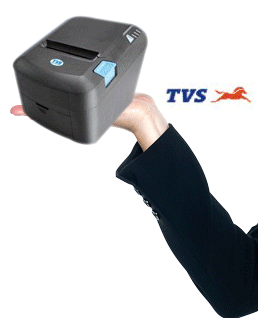Get best price for (Inkjet Printing)
Product Description
The additive fabrication technique of inkjet printing is based on the 2D printer technique of using a jet to deposit tiny drops of ink onto paper. In the additive process, the ink is replaced with thermoplastic and wax materials, which are held in a melted state. When printed, liquid drops of these materials instantly cool and solidify to form a layer of the part. For this reason, the process if often referred to as thermal phase change inkjet printing. Inkjet printing offers the advantages of excellent accuracy and surface finishes. However, the limitations include slow build speeds, few material options, and fragile parts. As a result, the most common application of inkjet printing is prototypes used for form and fit testing. Other applications include jewelry, medical devices, and high-precisions products. Several manufactures have developed different inkjet printing devices that use the basic technique described above. Inkjet printers from Solidscape Inc., such as the ModelMaker (MM), use a single jet for the build material and another jet for support material. 3D Systems has implemented their MultiJet Moldeling (MJM) technology into their ThermoJet Modeler machines that utilize several hundred nozzles to enable faster build times.
The inkjet printing process, as implemented by Solidscape Inc., begins with the build material
Inkjet Printing
(thermoplastic) and support material (wax) being held in a melted state inside two heated reservoirs. These materials are each fed to an inkjet print head which moves in the X-Y plane and shoots tiny droplets to the required locations to form one layer of the part. Both the build material and support material instantly cool and solidify. After a layer has been completed, a milling head moves across the layer to smooth the surface. The particles resulting from this cutting operation are vacuumed away by the particle collector. The elevator then lowers the build platform and part so that the next layer can be built. After this process is repeated for each layer and the part is complete, the part can be removed and the wax support material can be melted away.
Product Features
| Abbreviation: | MM, MJM |
|---|---|
| Material type: | Liquid |
| Materials: | Thermoplastics such as Polyester |
| Max part size: | 12.00 x 6.00 x 6.00 in. |
| Min feature size: | 0.005 in. |
| Min layer thickness: | 0.0005 in. |
| Tolerance: | 0.0010 in. |
| Surface finish: | Very Smooth |
| Build speed: | Slow |
| Applications: | Form/fit testing, Very detailed parts, Rapid tooling patterns, Jewelry and fine items, Medical devices |
PLEASE CONTACT FOR PRICE RELATED QUERIES AND PLACING ORDERS AT:
MINDWARE
S -4, Plot No-7, Pocket-7, Pankaj Plaza,
Near Metro Station, Sector-12,
Dwarka, New Delhi-110078, (India)+91-11-46102688 DIRECT LINE
Phones: +91-11-28032434, +91-11-46102688, +91-9810822688, +91-9717122688
Email: gm@indianbarcode.com
Technology with Human Touch
Ratings and Reviews
15 Reviews
Review
Share to this product
Categories
- Printer Heads 6
- DCode Printer 0
- FERRULE PRINTERS 1
- POINT OF SALES 2
- RFID Blocking Material 9
- MYNDS Brand Products 57
- Mobile Terminals 7
- Print & Apply Applicators 15
- Print Engines & Modules 4
- Packaging and Packing 9
- Films and Foils 18
- Printers 809
- Scanners 316
- Labels 246
- Tags 44
- Ribbons 79
- Software 35
- EAS 30
- RFID 119
- Hospital 7
- POS 55
- More 588














